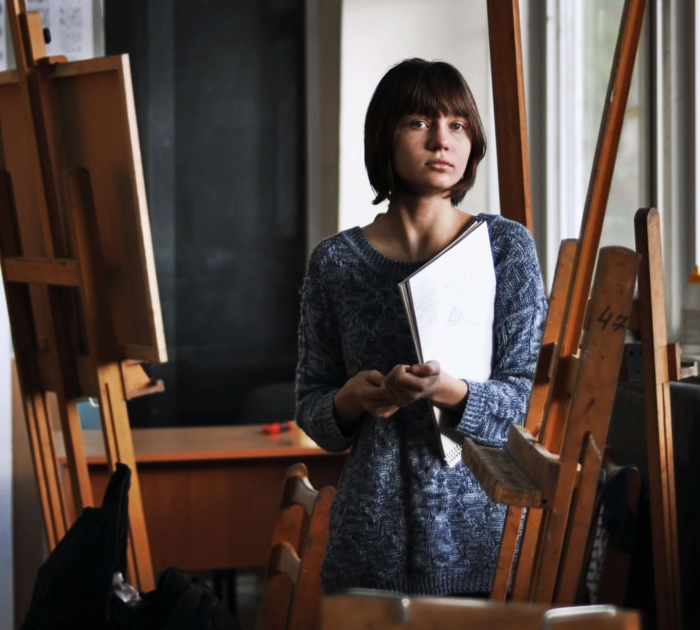Data matters in the classroom. This is why schools and teachers put so much emphasis on collecting it.
But that emphasis tends to focus on the “core” academic subjects in school as opposed to the creative subjects. This is an unfortunate side effect of the increasing significance placed on standardized test scores in math, science, and language arts as the main indicators of student growth.
Schools that focus solely on these subjects ignore a big piece of the education puzzle: art classes.
Why art class data matters
Art classes and the skills they teach students affect academic performance. That goes for performing and visual arts alike.
Danny Gregory, an arts education advocate and cofounder of Sketchbook Skool, laments that policies like No Child Left Behind have gutted school arts programs for decades. School districts have become so focused on standardized testing that they neglect the impact arts classes can have on students’ overall education.
They also lose sight of what can be gained from assessing a student’s creative abilities. Research has proven time and again that arts classes can have a positive impact on academic achievement, and that schools should pay attention to student performance in those classes.
One such study, published by Abigail Todhunter-Reid when she was with the Department of Childhood Studies at Rutgers University, concluded that “arts education positively predicted academic achievement and growth in reading and mathematics from kindergarten to 5th-grade.”
In another study, Indiana University researcher Kylie Peppler and colleagues were able to demonstrate that schools using an arts-integrated model demonstrated an improvement on English language arts standardized test scores. Meanwhile, schools without an arts-integrated approach actually regressed.
Art teachers should gather as much relevant data as possible in their classrooms. And they should advocate for sharing this data to help highlight student strengths and weaknesses in academic achievement.
How to collect data in art classrooms
Educators and cofounders of consultancy Artful Education Emily Gasoi and Sonya Robbins Hoffmann explain that it is usually more difficult for educators to gauge the process-learning skills required in art classes than it is to gauge content learning in other subjects.
That’s why it’s important for data to come from a variety of different sources, says data coach Heather McKenzie. Here are three sources of data that art teachers can collect in their classrooms.
Observe students as they practice their art
The most common type of data in any art class is going to be observational.
Art is about creating, and art teachers should collect the majority of their data through observation. These are data points that a pen-and-paper assessment would not be able to capture but that attest most to student learning and growth in art classes.
This type of data can be difficult to capture; teachers may need to get creative in collecting it. For example, in performing arts and music classes, audio and video recordings may be very helpful for collecting data. For visual arts, a digital portfolio that showcases students’ progression might be a good way to collect data — another strong example of how technology in the classroom can enhance both teaching and assessment.
Use summative and formative assessments
Because progression in art class is demonstrated best through the use of that art, project-based assessment is great for data collection, notes Heather Crockett, teacher and Art of Education’s chief of staff.
A big play, a much-anticipated final musical composition, a final dance, or a finished piece of art allows students to demonstrate their cumulative knowledge. These summative assessments work well in art classes because of the hands-on nature of these classes.
This doesn’t mean art educators should overlook the value of formative assessments in data collection, though. Art classes aren’t all fun and games. There are fundamental facts that need to be taught and facts that students should comprehend as part of their learning. An art teacher’s data-gathering techniques should still include brief quizzes, question-and-answer sessions, and unit exams.
Ask students for their thoughts
A student’s perception of their abilities and accomplishments is key data that teachers can gather, and teachers can collect it simply by asking their students to report on their own progress, the Room 241 Team at Concordia University–Portland notes. Self-assessments can be especially insightful in arts classes because of the process-learning nature of these classes.
Because these classes aren’t subject to standardized testing, art teachers have a little wiggle room to allow students to set their own goals and report on their progress in achieving them. These insights can be more telling than teacher observations and assessments because they are from the student’s point of view.
How to use that data
The data collected from art classes is useful both inside and outside of the art curriculum.
This data is helpful in the classroom because it allows teachers to pace lessons according to student performance. Beth Maloney, a fifth-grade teacher, says she uses data to create flexible groupings based on skill or standard, allowing her to personalize her teaching to each group of students.
For example, in a visual arts class, the teacher can group students by skill level with the art form. Rudimentary painters could be grouped together while experienced painters could be grouped together. This helps guide teachers in their approach to each group’s instruction.
This type of grouping also allows students to develop as artists without putting pressure on them to compete directly with more experienced students.
Sharing art class data with other teachers
According to the Saint Petersburg Arts Alliance, students involved in arts throughout high school had a 15-percent higher GPA than students who took no art classes. Academic teachers can tap into the data from art classes to help learn more about a student’s learning abilities.
Say a student is excelling in a music class but struggling in math. The data from the art class can help the math teacher find ways to help the student perform better in math.
Arts classes can and do make a difference in student learning, and schools should pay attention to how students are performing in these classes. The data that art teachers can provide about students can help improve learning beyond the art class.
Photos by bruce mars from Pexels & Svetlana Pochatun on Unsplash
















Send Comment:
1 Comments:
More than a year ago
I use my data so seemlessly on the spot I don’t know how to write it up for others.. plus seeing 130 students a day with no break between periods I don’t have a way to document observational data till my teaching day is over..I use rubrics but I don’t know how to write it up for others to see what I see in a thumbnail drawing etc... any guidance would be welcome